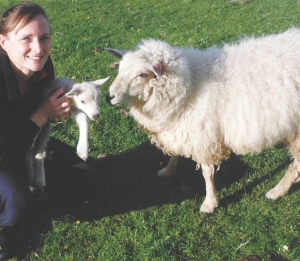Research physiologist Dr Sue McCoard, from the CRI’s Grasslands campus, Palmerston North, has been investigating use of thermo-imaging to measure brown fat deposits and what could possibly increase deposits in multiple newborns.
“For the first few days of life newborn lambs are reliant on brown fat,” explains McCoard.
“This is particularly important if they are born in challenging circumstances such as storms, where chill index is high, or if they don’t have much milk to drink.”
The thermo-imaging technique, if it works, would be the first non-invasive way to assess brown fat quantity and availability.
“Previous to this, the only way to measure brown fat in the body required the slaughter of animals,” notes McCoard.
Higher mortality of twins and triplets compared to singleton counterparts is a major issue, particularly where ewes haven’t been allocated enough feed, she adds.
“Finding consistent ways to increasing brown fat in new-born lambs is key to improving core temperature, and therefore survivability in early life.
“Increased lamb survival, and increasing the number of live lambs that can be sold or used as replacements, will make a major contribution to the welfare and economic outcomes of lamb production on New Zealand sheep farms.”
In good conditions mortality of twins and triplets is typically below 10% and 20% respectively, but in poor weather it can be much more, with many deaths in the first three days of life and often because the lamb is unable to generate enough body heat to keep warm during periods of extreme weather.
From birth until their first feed burning brown fat is a lamb’s main way of maintaining temperature.
McCoard applied for and received a $35,000 Curiosity Fund grant to finance her work. The fund is one of the ways AgResearch allocates core funding from MBIE, as opposed to contestable funding. A maximum of 20 projects of up to $35,000 ex GST each are funded annually.









